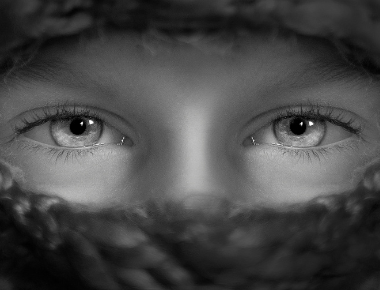Using EMDR as a Treatment for Mental Health Conditions in Children
∫⁄¡œÕ¯ Team

Using EMDR as a Treatment for Mental Health Conditions in Children
Eye Movement Desensitization and Reprocessing (EMDR) is a form of treatment recognized by the World Health Organization as an effective form of therapy for people who have experienced traumatic events. Predominantly used for treating patients with Post Traumatic Stress Disorder (PTSD), EMDR has proven a successful form of treatment for children and adolescents, as well as adults.
This guide will highlight how EMDR is used as a treatment in children, and how this would differ to treatment in adolescents and adults.
EMDR: A review
Although primarily used for the treatment of PTSD in patients, EMDR has had high-efficacy rates treating a number of mental health conditions, such as anxiety disorders (for example, OCD), depression, and eating disorders.
The therapy is based on using bilateral stimulation (BLS) to help the brain to process traumatic memories and beliefs, allowing the patient to make new connections and reprocess these thoughts in new ways. Examples of using bilateral stimulation could include encouraging the patient to follow the therapist’s finger with their eyes, body scans, or following a dot on the screen with their eyes. Learn more about what EMDR is and how it works from our dedicated guide.
EMDR Therapy for Children
When children experience a trauma, it’s very common for them to feel distressed following this. In some cases, this can improve within a few weeks, but some children may develop symptoms of PTSD, and/or symptoms of other mental health conditions, such as depression or anxiety. This disorder prevents adults, and kids alike, from processing their trauma naturally.
Symptoms of Children Struggling to Process Trauma:
- Flashbacks to the traumatic experience
- Upsetting thoughts or images
- Hypervigilance
- Nightmares
- Ongoing fear or sadness
- Irritability or angry outbursts
- Lack of positive emotions
Is EMDR the Best Treatment For Children’s Trauma?
EMDR has been proven as a successful form of treatment for children and adolescents, having the highest recommendation from the International Society for Traumatic Stress Studies (ISTSS, 2018). Often, children struggle more with other talking therapies, such as CBT, as they may find it hard to fully engage and articulate their thoughts. That’s why EMDR acts as a bridge between the therapist and the child patient, as a simpler but effective alternative.
One particular study looked at children aged 8-18 years old who had developed PTSD after a single traumatic event. This study showed that almost 92% of those children no longer had PTSD after on average four sessions of EMDR therapy. One year later, these children were still free of PTSD.
How is EMDR Adapted for Treating Kids?
By using EMDR therapy as a treatment for unprocessed trauma, it’s important to acknowledge how, and when, the process would need to be adapted based on developmental stages. For example, if the child is an adolescent, much of the material used in the steps of the EMDR process can be used, or reworked slightly, to fit the adolescent’s developmental requirements.
However, if the child is below ten years old, for example, the process will naturally need to be adapted accordingly. For example, pictures could be used instead of words to suit the patient’s needs, or the therapist could create a story around the traumatic events to make the treatment more accessible for children who are struggling.
Articulating trauma as an adult can be tricky, even when we know the words – so acknowledging how difficult it could be for a child to speak about their trauma, when they might not even know the words, is imperative during the therapy process. That’s why children require sensitive and individualized approaches which take into account their age, level of understanding and maturity.
Do I Need Extra EMDR Training for Treating Children?
As a therapist, it’s important to identify whether you feel you already have the qualifications and experience to adapt your EMDR knowledge to children, or whether you require further training or supervision. has released a useful document showing guidelines around this – it suggests that clinicians who lack full professional training in child and adolescent mental health are likely to lack competency in the necessary assessment and therapeutic skills required to use EMDR to treat children.
Here at ∫⁄¡œÕ¯, we provide a wide range of for clinicians to further widen their knowledge in the mental health sphere. For more information on what courses would be the best route for you, contact a member of our professional team now.
EMDR Online Courses
Topic: Children & Adolescents | Eye Movement Desensitization & Reprocessing (EMDR) | Trauma
Tags: Advice | Children | EMDR | Strategies | Success | Teens | Trauma Treatment



